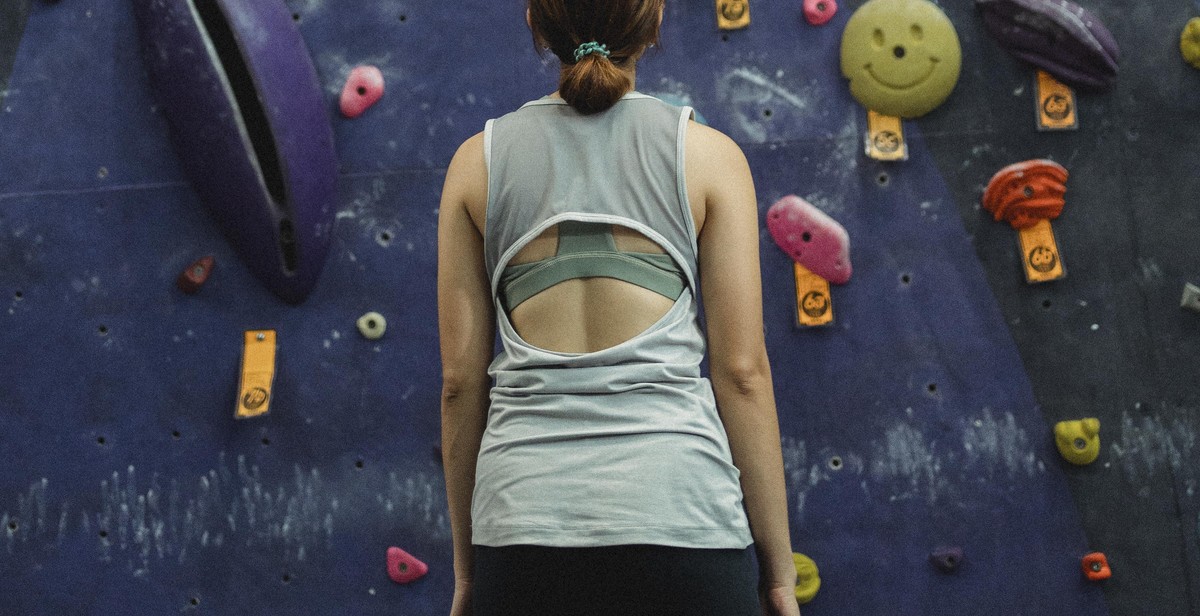How to Start a Parachute Jumping Club: Steps to Establishing a Community of Skydiving Enthusiasts
Skydiving is one of the most thrilling and adventurous sports that attracts people from all walks of life. If you are passionate about skydiving and want to share your enthusiasm with others, starting a parachute jumping club can be a great way to build a community of like-minded individuals.
However, starting a parachute jumping club from scratch can be a daunting task, especially if you have no prior experience in managing a club or organizing events. In this article, I will share my personal experience and provide you with a step-by-step guide on how to start a parachute jumping club.
Why Start a Parachute Jumping Club?
Before we dive into the details of how to start a parachute jumping club, let’s first talk about why you should consider starting one in the first place.
- Meet other skydiving enthusiasts and build a community
- Organize group jumps and events
- Share knowledge and learn from others
- Access to discounted rates for equipment and training
- Improve your skills and progress as a skydiver
Now that we have established the benefits of starting a parachute jumping club, let’s move on to the steps you need to take to make it happen.

Step 1: Define Your Club’s Goals
Starting a parachute jumping club is an exciting and rewarding endeavor that requires careful planning and consideration. Before you begin recruiting members and purchasing equipment, it’s important to define your club’s goals. This will help you create a clear vision for your club and ensure that everyone is on the same page.
Personal Goals
As the founder of the club, it’s important to consider your personal goals for starting a parachute jumping club. What do you hope to achieve through this venture? Are you looking to improve your own skills as a skydiver? Do you want to share your passion for the sport with others? Or, are you hoping to turn this into a full-time business?
Whatever your personal goals may be, it’s important to define them clearly. This will help you stay focused and motivated throughout the process of starting and running a club.
Community Goals
In addition to your personal goals, it’s important to consider the goals of your community. What do you hope to achieve for your members? Are you looking to create a tight-knit community of skydiving enthusiasts? Do you want to offer training and coaching to help members improve their skills? Or, are you hoping to provide a safe and supportive environment for people to try skydiving for the first time?
By defining your community goals, you can ensure that your club is meeting the needs of its members and providing value to the community as a whole.
Creating a Mission Statement
Once you have defined your personal and community goals, it’s time to create a mission statement. This should be a brief, clear statement that defines the purpose and values of your club.
For example, your mission statement might be “To provide a safe and supportive community for skydiving enthusiasts of all levels to improve their skills and share their passion for the sport.”
Table 1: Examples of Mission Statements
| Club | Mission Statement |
|---|---|
| Skydiving Club of America | To promote the sport of skydiving and provide a community for enthusiasts to learn, grow, and compete at all levels. |
| Jumping Jacks Skydiving Club | To provide a fun and supportive environment for people to try skydiving for the first time and to help experienced skydivers improve their skills. |
| The Sky’s the Limit Skydiving Club | To create a community of skydiving enthusiasts who share a passion for adventure, adrenaline, and pushing their limits. |
By creating a clear mission statement, you can ensure that your club is focused on achieving its goals and providing value to its members and the community.
- Define your personal goals for starting a parachute jumping club.
- Consider the goals of your community and what you hope to achieve for your members.
- Create a clear mission statement that defines the purpose and values of your club.

Step 2: Research Your Market
Before starting a parachute jumping club, it is important to conduct thorough market research to understand the industry and your potential customers. This will help you identify your target market, understand their needs and preferences, and develop effective marketing strategies to attract them to your club.
Competitor Analysis
One of the first things you should do is analyze your competitors. Identify other parachute jumping clubs in your area and research their offerings, pricing, and marketing strategies. This will help you understand what works and what doesn’t in the industry and give you ideas for how to differentiate your club from others.
You can conduct a competitor analysis by visiting their websites, social media pages, and physical locations. Take note of their services, prices, and any promotions they offer. Also, pay attention to their customer reviews and feedback to see what customers like and dislike about their experiences with the club.
Use this information to identify gaps in the market that your club can fill. For example, if you notice that other clubs don’t offer a certain type of jump or don’t have a strong online presence, you can focus on providing those services and marketing them effectively to attract customers.
Market Research
In addition to analyzing your competitors, you should also conduct market research to understand your potential customers. This includes identifying your target market, understanding their needs and preferences, and developing effective marketing strategies to attract them to your club.
Start by identifying your target market. This may include individuals who are interested in extreme sports, adventure seekers, or people who simply want to try something new and exciting. Once you have identified your target market, research their needs and preferences. This may include the types of jumps they are interested in, their preferred pricing, and the level of customer service they expect.
You can conduct market research through surveys, focus groups, and online research. Surveys can be distributed through social media, email, or other online platforms to collect data on your potential customers. Focus groups can be conducted in-person or online to gather more detailed feedback on your club’s offerings and marketing strategies. Online research can also be useful for understanding industry trends and identifying potential opportunities for growth.
Summary
Conducting thorough market research and competitor analysis is crucial for starting a successful parachute jumping club. Use this information to identify gaps in the market, understand your potential customers, and develop effective marketing strategies to attract them to your club.
Step 3: Establish a Business Plan
Once you have identified your potential market and determined the feasibility of starting a parachute jumping club, it’s time to establish a business plan. A business plan will help you define your goals, objectives, and strategies to achieve them.
Mission Statement
The first step in creating a business plan is to develop a mission statement. This statement should clearly state the purpose and goals of your club. Your mission statement should be concise and to the point, so that everyone who reads it understands your club’s purpose.
Your mission statement might read something like this: “Our mission is to provide a safe, fun, and supportive community for skydiving enthusiasts of all levels, while promoting the sport of skydiving and fostering a culture of safety and respect.”
Financial Plan
One of the most important aspects of your business plan is your financial plan. This plan should outline your club’s financial goals and how you plan to achieve them. To create a financial plan, you’ll need to determine your start-up costs, projected income, and anticipated expenses.
Start-up costs might include things like equipment, insurance, permits and licenses, and marketing expenses. To determine your projected income, you’ll need to estimate how many members you’ll have and how much each member will pay in membership fees. Anticipated expenses might include things like rent, utilities, and salaries for any employees you may hire.
Once you have a clear understanding of your start-up costs, projected income, and anticipated expenses, you can develop a budget that will help you achieve your financial goals. Be sure to include a contingency fund in your budget to account for unexpected expenses or emergencies.
Marketing Plan
To attract members to your club, you’ll need to develop a marketing plan. This plan should outline your strategies for promoting your club and attracting new members. Your marketing plan might include things like social media advertising, local print or radio ads, and flyers or posters around town.
One effective strategy for attracting new members is to offer a free or discounted first jump. This can be a great way to get people interested in your club and build a sense of community among your members. You might also consider hosting events or open houses to showcase your club and introduce potential members to the sport of skydiving.
As you develop your marketing plan, be sure to track your results and adjust your strategies as needed. By monitoring your progress and making changes as necessary, you can ensure that your club continues to grow and thrive.
| Expenses | Estimated Cost |
|---|---|
| Equipment | $25,000 |
| Insurance | $5,000 |
| Permits and Licenses | $2,000 |
| Marketing Expenses | $3,000 |
| Rent | $10,000 |
| Utilities | $2,000 |
| Salaries | $20,000 |
| Contingency Fund | $5,000 |
| Total | $72,000 |
Step 4: Secure Funding
Starting a parachute jumping club requires a significant amount of funding. There are several ways to secure funding for your club:
Grants and Sponsorship
One of the best ways to secure funding for your club is through grants and sponsorships. You can look for grants from local or national organizations that support sports and recreational activities. These grants can provide your club with the necessary funds to purchase equipment, rent a facility, and pay for other expenses.
You can also seek sponsorship from local businesses or corporations. Sponsorship can provide your club with financial support, as well as exposure to a wider audience. In return, you can offer advertising opportunities for the sponsor, such as placing their logo on your club’s website and promotional materials.
Membership Fees
Another way to secure funding for your club is through membership fees. You can set up different membership levels, with varying fees, to accommodate different budgets and needs. For example, you can have a basic membership level that only includes access to the club’s facilities and equipment, and a premium membership level that includes additional benefits such as discounts on equipment rental and training sessions.
It’s important to set reasonable membership fees that will cover your club’s expenses, but also be affordable for your members. You can also offer discounts for members who refer their friends or family to join the club.
| Membership Level | Monthly Fee | Benefits |
|---|---|---|
| Basic | $50 | Access to facilities and equipment |
| Premium | $100 | Access to facilities and equipment, discounts on equipment rental and training sessions |
By securing funding through grants, sponsorship, and membership fees, you can ensure that your parachute jumping club has the necessary resources to thrive and provide a safe and enjoyable experience for its members.

Step 5: Obtain Necessary Permits and Licenses
Before you can start operating your parachute jumping club, it is essential to obtain all the necessary permits and licenses. Failure to do so can result in hefty fines, legal troubles, and even the closure of your club. Here are the two primary types of permits and licenses you need to obtain:
FAA Regulations
The Federal Aviation Administration (FAA) regulates all aspects of aviation, including parachute jumping. Therefore, you need to comply with all FAA regulations to ensure the safety of your jumpers and the general public.
The first step is to obtain a parachute jumping certificate from the FAA. This certificate proves that you have met all the necessary requirements, such as having certified instructors, proper equipment, and safety procedures in place. You can apply for this certificate by contacting your local FAA office or by visiting their website.
Additionally, you need to ensure that all your equipment is registered with the FAA and undergoes regular inspections. This includes your parachutes, harnesses, and other gear. You also need to follow all FAA guidelines for jump altitude, weather conditions, and other safety measures.
Local Permits
Aside from FAA regulations, you also need to comply with local permits and licenses. Depending on your location, you may need to obtain permits from your city or county for activities such as noise, zoning, and safety.
For example, you may need to obtain a noise permit if your parachutes create excessive noise that disturbs nearby residents. You may also need to obtain a zoning permit if your club is located in a residential area.
Furthermore, you need to ensure that you have liability insurance to protect your club in case of any accidents or injuries. You can obtain this insurance from a reputable insurance provider that specializes in aviation-related policies.
| Permit/License | Issuing Authority | Cost | Validity Period |
|---|---|---|---|
| Noise Permit | City/County | $100 | 1 year |
| Zoning Permit | City/County | $200 | 2 years |
| Liability Insurance | Insurance Provider | $500 – $1000 | 1 year |
It is crucial to research and obtain all the necessary permits and licenses before starting your club to avoid any legal issues. Remember to renew your permits and licenses regularly to ensure that your club operates legally and safely.

Step 6: Build Your Team
Starting a parachute jumping club requires a dedicated team of individuals who share a passion for skydiving. Here are some staffing needs and considerations to help you build your team:
Staffing Needs
1. Experienced Skydivers: It is important to have experienced skydivers on your team who can serve as instructors and mentors for new members. Look for individuals who have at least 200-300 jumps under their belt and hold a valid skydiving license.
2. Administrative Staff: Your club will also need administrative staff to handle tasks such as scheduling jumps, managing finances, and coordinating events. Consider individuals with experience in event planning, accounting, and customer service.
3. Ground Crew: A ground crew is essential to ensure the safety of the jumpers. This team will be responsible for packing parachutes, checking equipment, and providing assistance during takeoff and landing. Look for individuals who are detail-oriented and have experience in logistics and safety procedures.
Training and Certification
1. Instructor Training: If you plan to offer skydiving instruction, it is essential to have certified instructors on your team. Look for individuals who hold a valid instructor rating from a recognized skydiving organization, such as the United States Parachute Association (USPA). You can also consider offering training programs to members who are interested in becoming instructors.
2. Certification Requirements: It is important to ensure that all members of your club meet the certification requirements set by the USPA or other recognized organizations. These requirements typically include a minimum number of jumps, completion of a training program, and passing a written exam.
3. Continuing Education: Skydiving is a dynamic sport, and it is important for your team to stay up-to-date with the latest safety procedures and techniques. Encourage your members to attend training courses and seminars offered by recognized organizations to enhance their skills and knowledge.
Conclusion
Building a dedicated team of experienced skydivers, administrative staff, and ground crew is essential to the success of your parachute jumping club. Ensure that all members meet the certification requirements and receive ongoing training to maintain high standards of safety and professionalism.

Step 7: Purchase Equipment and Supplies
Now that you have established your parachute jumping club, it’s time to purchase the necessary equipment and supplies to ensure the safety and enjoyment of your members.
Parachutes and Harnesses
The most important equipment for any skydiver is the parachute and harness. When purchasing parachutes and harnesses, it’s important to consider the needs of your members. Beginners may require different equipment than experienced skydivers.
There are several types of parachutes available, including:
- Round Parachutes
- Ram-Air Parachutes
- Winged Parachutes
Round parachutes are typically used for military purposes and are not ideal for recreational skydiving. Ram-air parachutes are the most common type of parachute used for skydiving. They are designed to provide more control and stability during the descent. Winged parachutes are used for advanced skydiving maneuvers and are not recommended for beginners.
When purchasing harnesses, it’s important to ensure that they fit properly and are comfortable for the skydiver. A poorly fitting harness can lead to discomfort and even injury during the jump.
Safety Equipment
In addition to parachutes and harnesses, there are several other pieces of safety equipment that are essential for skydiving:
- Altitude Altimeter
- Automatic Activation Device
- Helmet
- Goggles
An altitude altimeter is a device that measures the height above ground level during the descent. An automatic activation device is a backup system that automatically deploys the reserve parachute if the main parachute fails to open. Helmets and goggles are essential for protecting the skydiver’s head and eyes during the jump.
Purchasing Options
When purchasing equipment and supplies for your parachute jumping club, there are several options available:
- Buy New
- Buy Used
- Rent
Buying new equipment can be expensive, but it ensures that you have the latest and safest equipment available. Buying used equipment can be a more affordable option, but it’s important to ensure that the equipment is in good condition and has been properly maintained. Renting equipment can be a good option for beginners who are not yet ready to invest in their own equipment.
Conclusion
Purchasing the right equipment and supplies is essential for the safety and enjoyment of your members. When purchasing equipment, it’s important to consider the needs of your members and ensure that the equipment is properly maintained and in good condition. With the right equipment and supplies, your parachute jumping club will be able to provide an exciting and safe skydiving experience for all members.

Step 8: Launch Your Club
After completing all the previous steps, it’s time to launch your parachute jumping club. This involves recruiting members and hosting events to create a community of skydiving enthusiasts. Here’s what you need to do:
Recruit Members
Recruiting members is vital for the success of your club. You can start by reaching out to your local skydiving community and sharing your vision for the club. Attend skydiving events and talk to people who are interested in the sport. You can also create a website or social media page for your club to attract potential members.
When recruiting members, ensure that they meet the minimum requirements for skydiving. You can set your own requirements, but they should not be less than the industry standard. You can also provide training for those who are new to the sport.
Membership Benefits
To attract more members, you can offer membership benefits such as discounts on gear rental, priority booking for events, and access to exclusive training sessions. You can also organize member-only events to create a sense of community and belonging.
Host Events
Hosting events is an excellent way to bring your members together and create a community of skydiving enthusiasts. You can organize events such as:
- Jumping competitions
- Social events
- Training sessions
- Celebrations
When planning events, ensure that you have the necessary resources such as equipment, facilities, and personnel. You can partner with other skydiving clubs or businesses to share resources and attract more participants.
Event Promotion
Promote your events on your website, social media pages, and other relevant platforms to attract more participants. You can also use email marketing and word-of-mouth to reach potential attendees. Ensure that you provide all the necessary information such as date, time, location, and registration requirements.
| Event Checklist | Details |
|---|---|
| Equipment | Parachutes, helmets, jumpsuits, etc. |
| Facilities | Landing area, packing area, spectator area, etc. |
| Personnel | Instructors, safety officers, judges, etc. |
| Refreshments | Food, drinks, etc. |
By following these steps, you can successfully launch your parachute jumping club and create a community of skydiving enthusiasts. Good luck!

Conclusion
Starting a parachute jumping club can be a fun and rewarding experience for skydiving enthusiasts. With the right approach, you can establish a thriving community of like-minded individuals who share your passion for this thrilling sport. By following the steps outlined in this guide, you can create a safe and supportive environment for novice and experienced jumpers alike.
Recap of Steps to Start a Parachute Jumping Club
- Identify potential members and their needs
- Secure a suitable location for your club
- Obtain necessary permits and insurance
- Acquire equipment and facilities
- Hire qualified instructors and staff members
- Develop a training program for members
- Promote your club and attract new members
Remember to prioritize safety and adhere to industry standards and regulations. Building a strong community and fostering a culture of inclusivity and support can help your club thrive in the long run. Regularly assess your club’s progress and make adjustments as needed to ensure the best possible experience for your members.
| Benefits of Starting a Parachute Jumping Club |
|---|
| Opportunity to share your love for skydiving with others |
| Chance to meet and connect with like-minded individuals |
| Potential to earn revenue through membership fees and events |
| Access to equipment and facilities for personal use |
Starting a parachute jumping club requires dedication, hard work, and a willingness to take risks. But with the right approach, it can be a fulfilling and exciting endeavor that brings together people from all walks of life.
